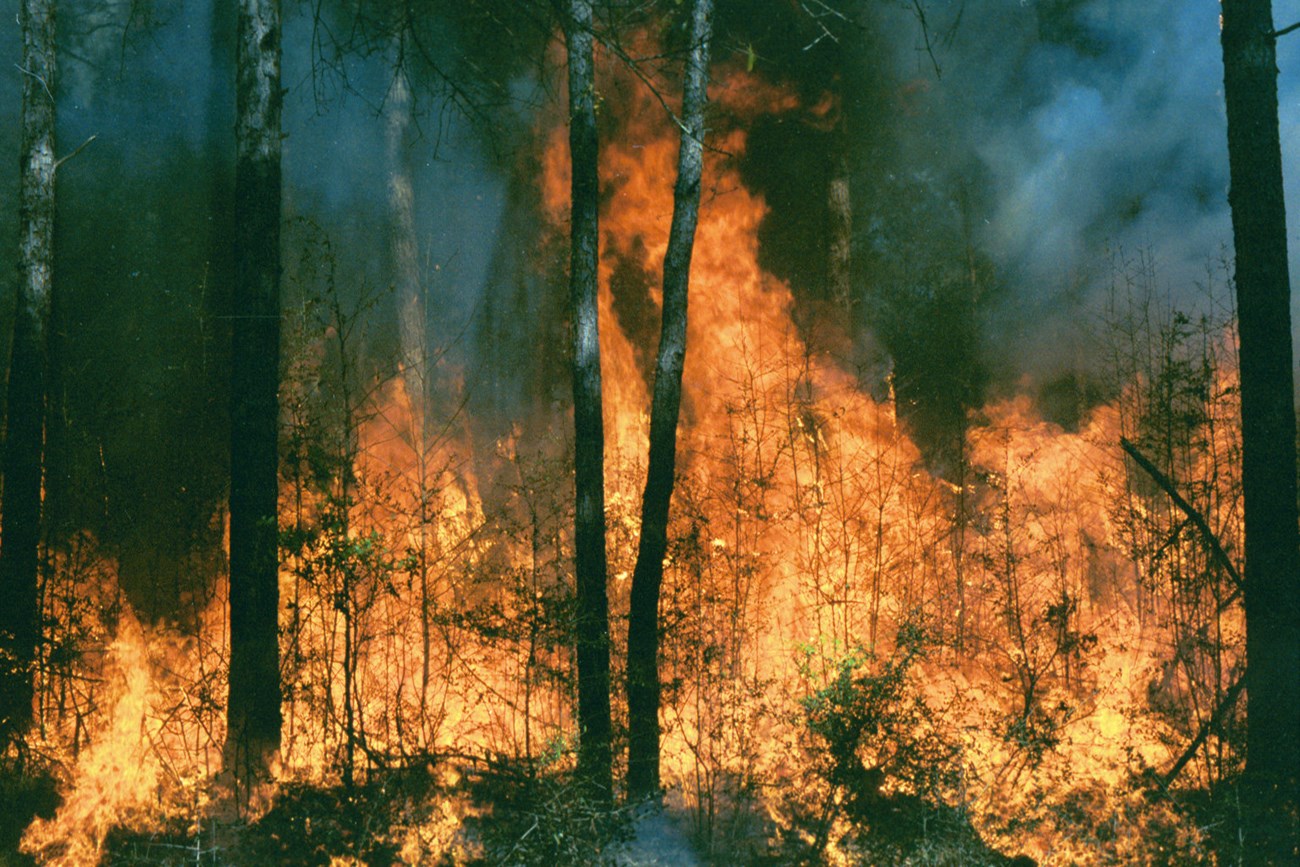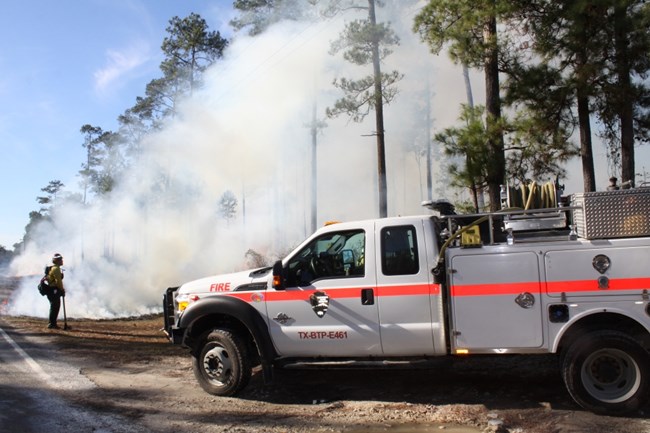
NPS Photo Fire in the ThicketFire is a natural factor in the Big Thicket. Fire has swept across North America for tens of thousands of years from the Great Plains to the pine barrens of the Northeast to the piney woods of Southeast Texas. The regime of fire has been witnessed by many cultures and recorded in their histories. More recently, humankind has influenced these regions and others for many decades effectively stopping the fire process in these natural systems. Yet, fire has been part of the natural world and has caused species living in some areas to tolerate, indeed, require the presence of fire to grow. Whatever the historic cause of fire, American Indians burning vegetation, lightning strikes, small volcanic eruptions, ecosystems have evolved through a long selection process, a process that requires the essential element of fire. 
NPS Photo Prescribed FireToday, the National Park Service and other land agencies have successfully introduced prescribed fire to the environment. Prescribed fire was introduced to Big Thicket National Preserve several years ago and continues to be effective today. Fire managers take care in planning a prescribed fire. Atmospheric conditions, fuel types, topography, and the amount of moisture in the fuel to be burned, to name a few, are all carefully considered and measured against the conditions wanted in the outcome of a prescribed fire. Areas in Big Thicket National Preserve selected for prescribed fire have been affected by human actions like stock grazing, lumbering, and other forms of vegetation manipulation including long-term fire suppression. The intent is to slowly bring fire back into the natural process and assist with the dynamics of vegetation using low intensity fire. Over the course of decades of prescribed fire, the achieved outcomes should be healthier pine and hardwood stands, grasses, and other small herbaceous plants on the forest floor, and more animals living in a dynamic and healthy environment. A Nationwide EffortHuman-caused and potentially destructive naturally-caused wildland fires are suppressed throughout the United States. Federal land agencies, like the National Park Service, combine their efforts to suppress destructive wildland fires regularly. The National Interagency Fire Center (NIFC) in Boise, Idaho, is the headquarters for all Fire Mangers in Federal land agencies. The NIFC web site has current data addressing wildland fires in the United States. If you live in the "interface" (those border areas of wildland and housing development), there are several things you can do to protect your property, both landscape and home, from wildland fire. This protection scheme is referred to as defensible space requiring a weekend of hard work and generally good, sound common sense as you build structures and landscape your property. |
Last updated: February 12, 2024
